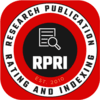Impact of Performing Arts on Individual and Health Management
Keywords:
Discipline, Practice, Intentions, Time Management, Cultural Hobbies, Theatre Productions, Music, Dance, Imagination, Authentic Expression, Personal Growth, Self-Discovery, Self-Reflection, Character Portrayal, Diseases, Chronic Illnesses, Endometriosis, Adenomyosis, Resilience, Adaptability, Condition Management, Physical Disability, Autoimmune Disorder, Body AcceptanceAbstract
The performing arts are widely recognized for their culture, tradition, and mythology. However, they have also gained recognition for their ability to evoke emotions. According to Natyashastra, performing arts are meant for entertainment, but they also have an enormous impact on individual well-being and both physical and mental health management. This abstract provides an overview of research on this topic, highlighting the composite benefits of the performing arts.
Discipline plays an instrumental part in the performing arts. The meticulous training and practice needed in performing arts stimulate discipline as individuals learn to set intentions, manage their time effectively, and overcome challenges in their cultural hobbies. Many performing arts activities, such as theatre productions or dance ensembles, require students to learn to work together and respect each other’s contributions.
One notable aspect of the performing arts is their ability to foster creativity and self- expression. Through various artistic mediums like music, dance, and theatre, individuals are encouraged to tap into their imagination, explore new ideas, and express themselves authentically. This creative outlet not only allows for personal growth but also promotes emotional well-being and self-discovery. The performing arts provide a safe and empowering space for individuals to communicate their thoughts, feelings, and experiences, offering a means of catharsis and self-reflection. Whether it’s through portraying a character on stage, composing a piece of music, or choreographing a dance routine, the performing arts nurture and unleash the innate creativity within individuals, this leads to a more profound comprehension of oneself and the surrounding world.
Diseases and chronic illnesses can pose unique challenges for individuals involved in the performing arts. Conditions such as asthma, arthritis, and endometriosis impact an artist’s ability to perform consistently. However, many performers demonstrate incredible resilience and adaptability, finding ways to manage their conditions while pursuing their passion for the arts. Regardless of the specific condition, whether it is a physical disability, chronic pain, or an autoimmune disorder, performing arts allow individuals to embrace their bodies and celebrate their abilities. Through performing arts, those with chronic illnesses can discover a renewed sense of self, resilience, and a reminder that their bodies are capable of incredible beauty and expression.
In conclusion, performing arts have a significant impact on individual well-being and health management. They enhance cognitive development, promote physical fitness, and support therapeutic interventions. Recognizing the potential of performing arts can inform the development of programs and policies that utilize artistic expression for the betterment of individuals’ lives. Further research is needed to explore underlying mechanisms and expand access to performing arts experiences.
References
Bräuninger, I. (2015). The expressiveness of dance as an art form: A philosophical inquiry. Philosophy Compass, 10(10), 631-640.
Dileo, C., & Bradt, J. (2009). Music therapy for pain management. In R. A. Moore (Ed.), Handbook of Pain and Palliative Care: Biobehavioral Approaches for the Life Course (pp. 289-305). Springer.
Ericsson, K. A., Krampe, R. T., & Tesch-Römer, C. (1993). The role of deliberate practice in the acquisition of expert performance. Psychological Review, 100(3), 363-406.
Hanna, J. L. (2010). Dance, gender, and culture. Macmillan International Higher Education.
Hanna, J. L., & Custodero, L. A. (2008). The role of time in the development of musicians’ expertise. In Handbook of research on music learning (pp. 191-213). Routledge.
Hanna, J. L., & Lindhout, A. (2010). The role of dance in the development of effective teaching and the cultivation of ethical relationships with children. Educational Philosophy and Theory, 42(3), 346-358.
Kenny, A. (2002). The technique of my musical language. G. Schirmer.
Koch, S. C., Morlinghaus, K., & Fuchs, T. (2007). The joy dance: Specific effects of a single dance intervention on psychiatric patients with depression. The Arts in Psychotherapy, 34(4), 340-349.
McNiff, S. (2011). Art as research: Opportunities and challenges. University of Chicago Press. Sawyer, R. K. (2011). Structure and improvisation in creative teaching. Cambridge University Press.
Särkämö, T., Tervaniemi, M., Laitinen, S., Forsblom, A., Soinila, S., Mikkonen, M., ... & Hietanen, M. (2008). Music listening enhances cognitive recovery and mood after a middle cerebral artery stroke. Brain, 131(3), 866- 876.
Young, K. R. (2013). The arts as coping mechanisms for chronic illness. The Permanente Journal, 17(4), 76-80.
Wylie, C., & Allensworth, M. E. (2012). Theater as empowerment: New strategies for working with children with chronic illness. Journal of Pediatric Oncology Nursing, 29(5), 279-284.









